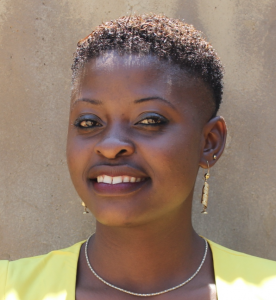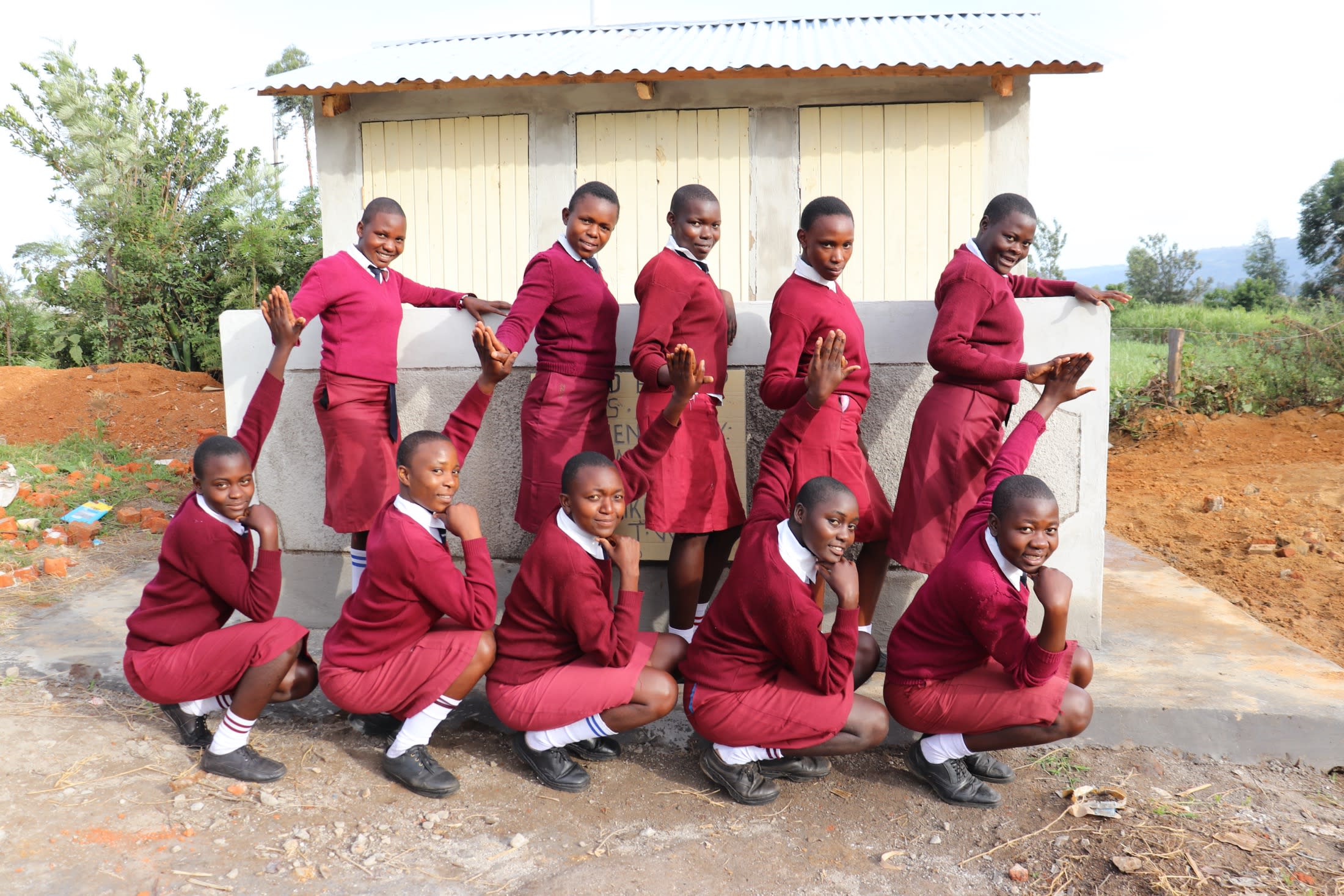"I am a class teacher of Form 1 and my class normally does not meet the learning targets we set. This is because these are the students who draw water in the morning to wash the toilets and clean the compound, thus they come to class later," said teacher Mr. Marango Nyongesa.
Mr. Nyongesa is 1 of the 16 teachers and staff who serve the 218 students at Friends School Ikoli Secondary. Founded in 1996 by the Friends Church, this school has never had enough clean and safe water for its students.
Currently, their main water source is a protected dug well across school grounds. To fetch water, students lower a bucket on a rope into the well, pull up the water and pour it into their own containers before walking back to the school buildings and delivering their water to the kitchen. Classes have a rotating assignment for fetching water for the rest of the school. They first go to the well at 6:30 am when students arrive for the day, and during other breaks and lunchtime as needed.
The environment around the well is clean and the water is available throughout the year. The challenge that comes with this water point is that students with physical disabilities cannot access it, and for able-bodied students, it requires a lot of energy and a conscious mind to be able to draw water well. Lacking either one of these results in a partially-full bucket pulled from the well and spills, causing further time wastage.
"At times we come from home without taking breakfast and on arrival in school we are on duty for fetching water. This is hard because we feel unconscious in looking deep in the water and don't have any energy to pull the container up. This affects us psychologically, thus making us not concentrate 100% in class," said one student.
Another challenge with the well is the water's quality and safety, put at risk because of its handling. The container used to draw the water along with the rope attached to it are left on the ground outside, contributing dirt and bacteria to the water when it is fetched. Without any large storage containers on campus, water is fetched and stored in students' 20-liter jerrycans, which upon our visit were not found to be clean.
There used to be 2 very small plastic rain tanks that the school used not just to collect rainwater but to store water from the well, but these were blown away in a windstorm and damaged several months ago, rendering them useless. Students are still asked to bring water from home to make up for these lost tanks, adding one more tiresome chore to start their day before their learning begins.
Some students and staff have complained of stomachaches, diarrhea, and other water-related illnesses believed to be associated with the water they are drinking at school.
"Lack of good water storage facilities has made me not want to be taking water from this school because I am affected by the well water. I once used it when I first came to teach in this school but I developed symptoms like a sore throat which took a lot of time to heal. That is when I decided not to drink the water in school but to carry mine from home or buy it," said teacher Mr. Kalamwa Muombe.
But the students cannot afford to purchase their own bottled water, and some of them still contribute questionable water from home to the school. Because the water is combined for use, this means that even 1 contaminated source causes everyone to suffer.
What we can do:
Rain Tank
A 75,000-liter rainwater catchment tank will help alleviate the water crisis at this school. The school will help collect the needed construction materials such as sand, bricks, rocks, and water for mixing cement. We will complement their materials by providing an expert team of artisans, tools, hardware, and the guttering system. Once finished, this tank will begin catching rainfall that will be used by the school’s students and staff for drinking, handwashing, cooking, cleaning, and much more.
We and the school strongly believe that all of these components will work together to improve standards at this school, which will help lead to better student academic performance and will help unlock the opportunity for these students to live better, healthier lives.
Handwashing Stations
There is currently nowhere for students to wash their hands after using the latrines or before eating lunch, let alone the water to do so.
The student health club will oversee the 2 new handwashing stations we will provide, and make sure they are kept clean and in working condition. The club leaders will fill the handwashing stations with water daily and make sure they are always supplied with a cleaning agent such as soap or ash.
VIP Latrines
2 triple-door latrine blocks will be constructed with local materials that the school will help gather. 3 doors will serve the girls while the other 3 will serve the boys. All of these new latrines will have cement floors that are designed to be easy to use and to clean. And with a rain tank right on school property, there should be enough water to keep them clean.
Training
We will hold a 1-day intensive training on improved hygiene, health, and sanitation habits at this school. Our team of facilitators will use a variety of methods to train students and staff, including participatory hygiene and sanitation transformation and asset-based community development. We will initiate a student health club which will prepare students to lead other pupils into healthy habits at school and at home. We will also lead lectures, group discussions, and provide illustrative handouts to teach health topics and ways to promote good hygiene practices within the school. We will then conduct a series of follow-up trainings before transitioning to our regularly scheduled support visits throughout the year.

 Rainwater Catchment
Rainwater Catchment
 Rehabilitation Project
Rehabilitation Project












































